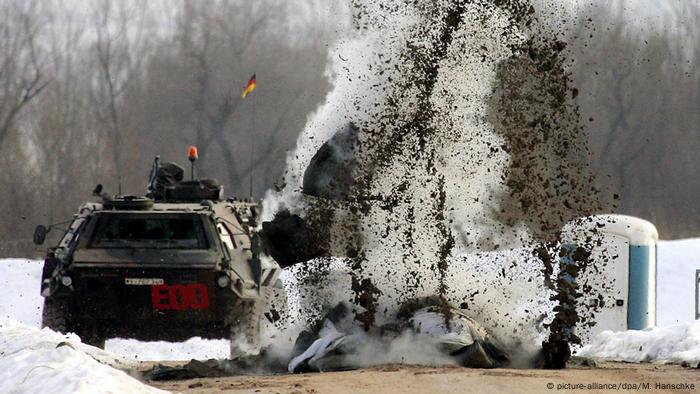Europe has long been ignoring the deteriorating security situation in Afghanistan.
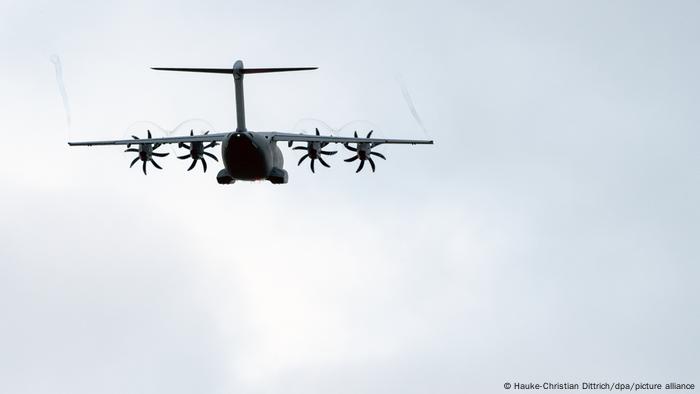
Germany's Bundeswehr prepared to evacuate German citizens from Kabul on Monday — but what about Afghan civilians seeking safety?
Within just a few days of the US troop withdrawal from Afghanistan, the Taliban began capturing one province after another. As the provincial capitals fell like dominos, thousands of Afghans fled their homes and headed for what they thought would be the safe haven of Kabul. But now the Taliban has taken the capital, too.
Meanwhile, the Western world is looking on, stunned as the Islamic Republic of Afghanistan is transformed into an emirate governed by the Taliban. I've been inundated with calls and messages from friends and colleagues expressing their sympathy.
A mission based on lies
The reason why this recent development has shocked so many is that they now realize that their governments launched a mission in Afghanistan 20 years ago not to defend human rights — but for reasons of political expediency.
But now that political priorities have changed and the cost-benefit equation no longer adds up, they wanted out. As fast as possible.

Waslat Hasrat-Nazimi is DW's head of Dari-Pashto service
The mission was one big lie. Joe Biden is determined to see that the mission overseen by four US presidents won't be handed on to a fifth. Human rights? Women's rights? Democracy? That's no longer the West's problem, it seems, it's suddenly for Afghans to sort out among themselves. "Afghan leaders have to come together," said Biden recently. "They've got to fight for themselves, fight for their nation."
Betrayed and abandoned
But what Biden fails to mention is that the US did not only invade Afghanistan back in 2001 in order to fight the Taliban and al-Qaida. The US also promised the Afghan people that it would bring democracy to their country.
Protecting the rights of Afghan women was one of the main arguments for the US-led war on Afghanistan. But two decades on, it's clear that this was all just empty rhetoric; neither women's rights nor democracy were the top priorities.
The same women who supposedly stood up a bit too vehemently for their rights in recent years were placated with promises that democracy and rule of law would always triumph, are now being cast back into the darkness in which they existed prior to 2001. They have been betrayed and abandoned. Many women's rights activists now fear for their lives.
Refugees must be taken in
The EU and Germany's asylum policy is no less hypocritical. Recent years have seen millions of Afghans flee their home country for years. No one makes this decision lightly. They fled because the security situation in Afghanistan had continued to worsen; their plight was ignored. Afghanistan was deemed a "safe country."
Many refugees were deported, others were only tolerated. Thousands of Afghans are living in appalling conditions in Greece, Turkey and the Balkans. EU politicians have refused to acknowledge the gravity of the security situation in Afghanistan and that the international mission has failed.
But now that it's too late, politicians, the media and academics are professing their shock. Western countries — including Germany — have a responsibility to Afghanistan. Instead of supporting warlords and corrupt politicians in recent years, they should have made concerted efforts to understand and engage with the Afghan people, their culture and society. They should have listened to the women's warnings instead of fobbing them off with meaningless promises. Rather than helping build an army, they should have been helping the Afghan people build a future.
So what happens next? Western countries must guarantee Afghan refugees asylum, as fast and as unbureacratically as possible. They must take in the Afghan refugees waiting for decisions on their status and living in terrible conditions in EU countries. They must also take in the Afghans who will arrive in the next few months and years, having fled a devastated country left high and dry by the West. That's the least Europe owes the people of Afghanistan.
Following the Taliban's recapture of Afghanistan, NATO and the EU have largely remained silent. The national governments are the ones reacting.
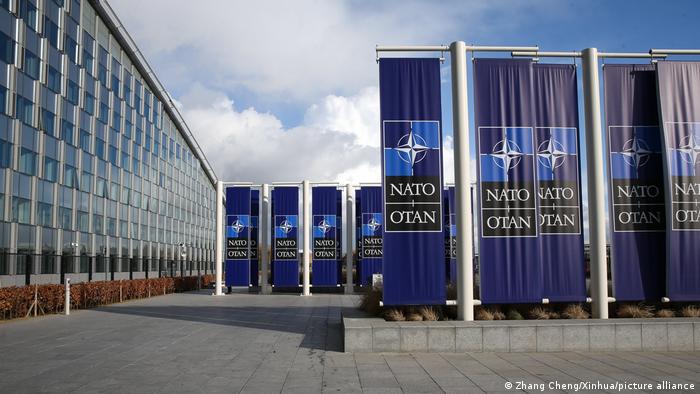
Nato headquarters in Brussels
EU diplomats appear to have been caught unaware by the Taliban's advance and the rapid collapse of the Afghan government. On Thursday, EU foreign policy chief Josep Borrell urged the Taliban to "immediately resume substantive, regular and structured talks," and agree to a cease-fire. He said the EU encourages "the Islamic Republic of Afghanistan to settle political differences, increase representation of all stakeholders and engage with the Taliban from a united perspective."
Two days before the fall of Kabul, that seems a bit clueless.
A request to guarantee the safe and orderly withdrawal of all foreigners and Afghans wishing to leave the country followed on Monday morning. It was signed by representatives from the EU and from parts of the international community. Chaotic scenes at Kabul airport, however, show that only military evacuation is still an option; civilian air traffic has been halted. A special EU foreign ministers' meeting was called for Tuesday afternoon.
Complaints, warnings from the European Parliament
The president of the European Parliament is urging a united EU response. "The country needs a lasting and inclusive political solution that protects the rights of women and allows Afghans to live in safety and with dignity. Asylum must be granted to those in danger of persecution," David Sassoli wrote on Twitter — a statement that also seems strangely belated.
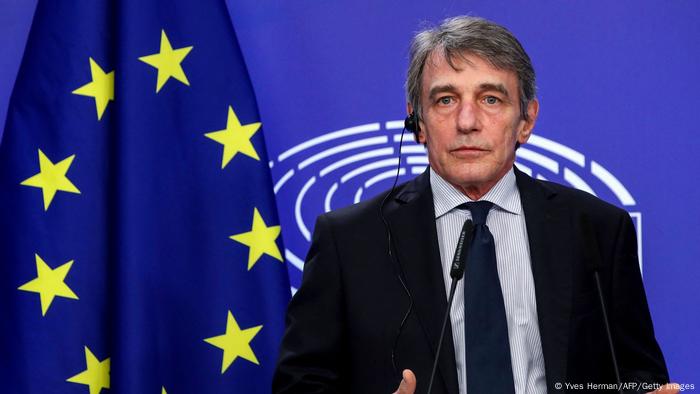
Urging a united EU response: David Sassoli
The foreign policy spokespersons of the center-right European People's Party (EPP) in the European Parliament have urged that more people be brought to safety quickly. "In addition to the Afghan local forces of the German armed forces, for example, teachers, doctors, mayors and women's rights activists have also held the torch of peace, freedom, democracy and human rights high in Afghanistan," Daniel Caspary and David McAllister wrote in a statement, adding that the EU must step up humanitarian aid in the region to avoid a surge of refugees to Europe: "We must now do everything we can to ensure that those fleeing get protection close to home."
The Greens are demanding that, at the least, the EU must now rescue the approximately 600 local personnel who worked in the EUPOL police mission, for the EU delegation in Kabul and the ECHO humanitarian aid mission — including their families. "Europe must live up to its responsibility for the local staff of the EU missions. Instead of acting quickly, the EU Commission and national governments are arguing about responsibilities," said Sven Giegold, a Green Party spokesman and lawmaker. He urged setting up an airlift for EU personnel.
Dacian Ciolos, spokesman for the Liberals in the European Parliament, called for a special summit of EU governments and a meeting of the EU Parliament. Afghanistan's "descent into darkness" must be urgently discussed, he said, in order to find a unified humanitarian and diplomatic response. "The international community must come together to protect those fleeing persecution," he wrote on Twitter.
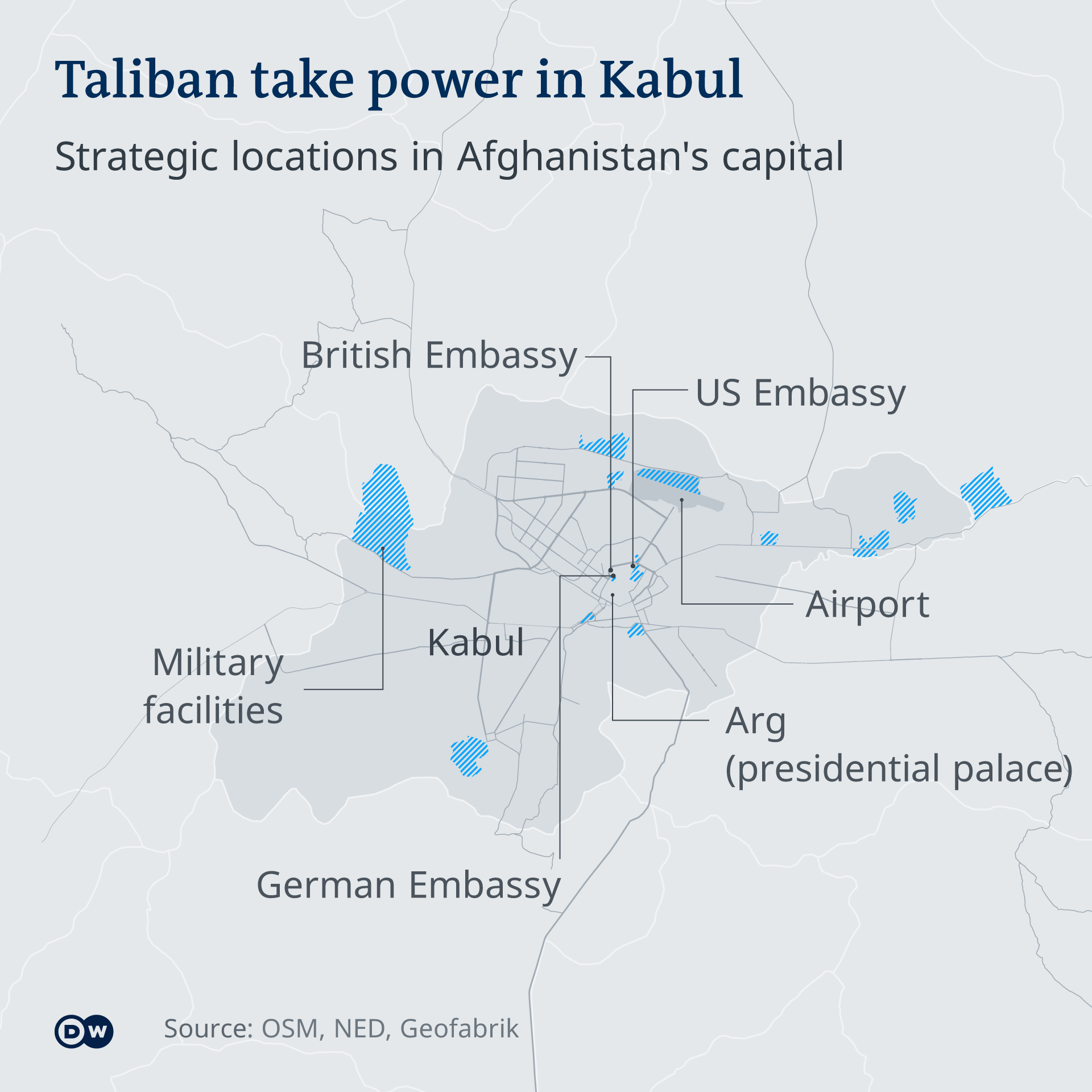
'Some people won't get back'
Security committee meetings were called in several European NATO countries on Monday, including the UK, Belgium and France. The military alliance's headquarters in Brussels, however, is silent.
On Monday, British Defense Secretary Ben Wallace announced a speeding up of procedures for civilian workers, saying, "Where the rules need to be changed, they will be changed." The plan, he said, is to evacuate 1,200 to 1,500 people per day until August 31 while Kabul airport is still under Western control.
“Some people won't get back," he said. "It's sad, the West has done what it's done, and we have to do our very best to get people out and stand by our obligations." He added that only Afghans who make it to Kabul have a chance to be flown out.
A German Foreign Ministry spokesman said it was unclear how long the evacuation of Kabul will be able to continue. In a Christian Democratic Union (CDU) party presidium meeting on Monday, German Chancellor Angela Merkel reportedly spoke of "bitter hours," saying the government identified some 2,500 local forces in Afghanistan, in addition to about 2,000 human rights activists and lawyers plus their families — a total of about 10,000 Afghans — who needed to be flown out, months ago.GERMANY'S NATO MISSIONSGermany's role in NATOWest Germany officially joined the trans-Atlantic alliance in 1955. However, it wasn't until after reunification in 1990 that the German government considered "out of area" missions led by NATO. From peacekeeping to deterrence, Germany's Bundeswehr has since been deployed in several countries across the globe in defense of its allies.
In cooperation with the United States, Germany is now evacuating people. "We could not perform such a mission without the help of the US," Merkel said. For women and the many Afghans "who chose progress and freedom," she said, what is happening now are "bitter events." The chancellor made it clear the German armed forces were dependent on the US concerning the rapid withdrawal from Afghanistan.
The plan is to continue evacuations for as long as possible, with special forces and paratroopers doing a dangerous job in Kabul, according to Defense Minister Annegret Kramp-Karrenbauer. Soldiers from previous Afghanistan missions were "shocked at what is happening," she said.
Speaking of the West's decades-long mission in Afghanistan, German government spokesman Steffen Seibert echoed Merkel's words Monday, calling recent developments "bitter." According to media reports, the Foreign Ministry paid no attention to situation reports from the embassy in Kabul urging speedy departures. CDU chancellor candidate Armin Laschet labeled developments in Afghanistan, "the biggest fiasco since the founding of NATO."
Emergency meeting in Paris
Many European countries, including Sweden, the Czech Republic, the Netherlands and Italy, have flown out their diplomatic staff and some relief workers. The French National Defense Council held an emergency meeting earlier Monday; President Emmanuel Macron plans to deliver a televised address in the evening. Human rights activists, journalists and artists with ties to France are to be flown out, along with embassy staff and Afghan personnel, in an airlift to Abu Dhabi.
The French government is not alone in fearing a new refugee crisis if millions of Afghans were to make their way to Europe. Greek Migration Minister Notis Mitarachi has already declared that his country will not be a "gateway for a new refugee wave."
LONDON (AP) — In frantic phone calls and voice messages, Khalida Popal can hear the distress and tearful pleas for help.
The football players in the Afghanistan women’s national team that Popal helped establish now fear for their lives after the Taliban swept to regain control of the country after two decades.
When they call, all Popal can do is advise them to flee their homes, escape from neighbors who know them as pioneering players, and try to erase their history — particularly activism against the Taliban who are now re-establishing the Islamic Emirate of Afghanistan.
“I have been encouraging to take down social media channels, take down photos, escape and hide themselves,” Popal told The Associated Press in a telephone interview from Denmark. “That breaks my heart because of all these years we have worked to raise the visibility of women and now I’m telling my women in Afghanistan to shut up and disappear. Their lives are in danger.”
The 34-year-old Popal can barely comprehend the speed of the collapse of the Afghan government and the sense of being abandoned by Western nations who helped to topple the Taliban in 2001. Having fled with her family after the Taliban captured Kabul in 1996, Popal returned to Afghanistan two decades ago as a teenager who had been living in a refugee camp in Pakistan. With the protection of the international community, Popal felt optimistic that women’s rights would be promoted.
“My generation had the hope of building the country, developing the situation for the next generation of women and men in the country,” she said. “So I started with other young women using football as a tool to empower women and girls."
By 2007, there were enough players for Popal to be part of Afghanistan's first women’s national team.
“We felt so proud of wearing the jersey,” Popal said. “It was the most beautiful, best feeling ever.”
Popal encouraged her teammates to use their platforms to speak out as escalating attacks were seeing the Taliban retake territory.
“I received so many death threats and challenges because I was quoted on the national TV," she said. “I was calling Taliban our enemy.”
Popal stopped playing in 2011 to focus on coordinating the team as a director at the Afghanistan Football Association. But the threats continued and she was eventually forced to flee Afghanistan to seek asylum in Denmark in 2016.
“My life was in great danger,” she said.
But she never abandoned the female footballers, helping to expose physical and sexual abuse, death threats and rape that implicated the Afghanistan federation leadership. The corruption in the sport was reflective of the shaky foundations of a country that has deteriorated rapidly after the withdrawal of troops from the U.S.-led mission.
“The women of Afghanistan believed in their promise but they left because there’s no more national interest. Why did you promise?” Popal asked. “This is what my girls crying and sending voice messages are saying. Why not say you would leave like this? At least we could protect ourselves.”
An exasperated Popal sighs.
“We would not have created enemies,” Popal said. “They are crying. They are just crying … they are sad. They are just like desperate. They have so many questions. What is happening to them isn’t fair.
“They are hiding away. Most of them left their houses to go to relatives and hide because their neighbors know they are players. They are sitting, they are afraid. The Taliban is all over. They are going around creating fear.”
Popal is a world away but connected by the messages pinging into her phone of the Taliban.
“They keep taking video and photos from the window showing they are just outside the home and that is very sad,” she said.
It's hard to even imagine Afghanistan, ranked 152nd by FIFA out of 167 women's teams, playing again.
“It’s been very painful to witness when yesterday the government surrendered,” Popal said. “Women lost hope.”
___
Rob Harris, The Associated Press
